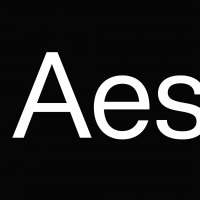R.I.P.
Comments
-
I guess it brings up the question of what the lesser evil is, leaving a seemingly unused character in the font, or breaking the assigned unicode code point by not including it?0
-
As you travel through the mysterious world of Latin Unicode, you'll encounter several accented glyphs like the capital ringacutes where it's difficult to comfortably fit the accents into your vertical metrics. As far as I can see, there are 3 choices.
1: Squeeze the accents. This can work in lighter weights but in heavier weights, the accents can turn into a smudge. If the accents end up overlapping, you might have to decompose and removing overlaps.
2: Change your vertical metrics to allow for extremely high/low stacked accents. There are obvious disadvantages to doing that.
3: Let the accents exceed your vertical metrics—let them hang over the line.
If you look at Windows/Mac system fonts, you'll find all 3 of these approaches for ringacute and Vietnamese stacked accents. Someone with experience setting Vietnamese type could have insight on the best approach for dealing with tall accents.
My assumption is that people setting Vietnamese are accustomed to the perils of vertical accent collisions and increase leading accordingly. If that's the case, maybe that one person, 50 years from now who finally uses an Aringacute, will also be able to deal with an accent that goes over the line.
It's something I think about, because I've used all three of these approaches to the high/low accent problem.0 -
In desktop fonts, I implement both the spacing solution and the outdated Ldot glyph for backwards compatibility. (Though actually, it is more for users who want to check if all necessary characters for a certain language are included, and for whatever reason, Ldot seems to be still popular on such lists.) Depending on the purpose of the font, I sometimes copy the contextual locl substitution into calt, to make it work in language-agnostic environments.Michael Jarboe said:Rainer, I'm curious how your CAT feature is different than Nick Shinn's?
I wasn't aware of this CAT language issue (thought simply that /Ldot - /ldot was actually used), but looks like I'll be implementing a solution from now on.
*Edit* Looks to me after reading the Glyphs Catalan Punt Volat page that the 'Spacing Solution' is most sound.
In webfonts, where every byte counts, I never include unused characters like Ldot, ldot, IJ, ij, napostrophe and what have you. None of my fonts ever had aringacute, and I have not received a single complaint until today.
1
Categories
- All Categories
- 46 Introductions
- 3.9K Typeface Design
- 487 Type Design Critiques
- 565 Type Design Software
- 1.1K Type Design Technique & Theory
- 656 Type Business
- 861 Font Technology
- 29 Punchcutting
- 521 Typography
- 119 Type Education
- 325 Type History
- 77 Type Resources
- 112 Lettering and Calligraphy
- 33 Lettering Critiques
- 79 Lettering Technique & Theory
- 559 Announcements
- 94 Events
- 114 Job Postings
- 170 Type Releases
- 180 Miscellaneous News
- 276 About TypeDrawers
- 54 TypeDrawers Announcements
- 120 Suggestions and Bug Reports


